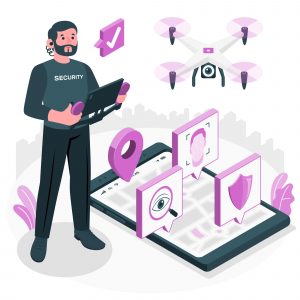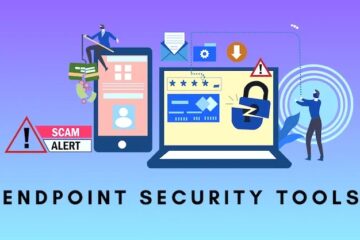Why is EDR Important?
Endpoint Detection and Response (EDR) Tools play a crucial role in enabling security teams to swiftly identify and mitigate threats, reducing the impact of potential attacks. As an essential component of Endpoint Protection Platforms (EPP), EDR tools offer valuable insights into endpoint security capabilities, shaping the landscape of the endpoint security market. This article delves into the tools, features, and scopes of EDR, providing a comprehensive overview of the topic.
What are Endpoint Detection and Response (EDR) Tools? – How to Choose an EDR
EDR refers to a solution that monitors endpoint behavior, detects suspicious patterns through data analytics and contextual information, blocks threats, and empowers security teams to respond to and resolve compromised systems efficiently. Various tools are available to help detect endpoint threats and facilitate thorough investigations, making them integral to modern endpoint security strategies for detecting intrusions.


What are Endpoint Detection and Response (EDR) Tools? – What are the EDR tools?
EDR tools notify security teams of malicious activities, enabling prompt investigation and containment of endpoint attacks. These solutions gather endpoint data, including process executions, endpoint communications, and user logins, analyze the data for anomalies and malicious activities, and provide valuable insights for security teams to respond effectively. Endpoints can range from laptops and workstations to servers, cloud systems, mobile devices, and IoT devices, making EDR tools versatile in safeguarding various endpoints.
What are Endpoint Detection and Response (EDR) Tools and Practices? – How does EDR Work?
EDR solutions ingest data from endpoints, such as running applications and authentication attempts, to monitor and analyze suspicious activities. By analyzing data from desktops, mobile devices, laptops, and more, EDR solutions generate alerts that prompt security teams to investigate and address potential threats. These tools also collect telemetry data on suspicious activities, enhancing threat detection capabilities and providing contextual information for a more comprehensive security approach.
What are Endpoint Detection and Response (EDR) Tools? – What are the capabilities of EDR?
EDR solutions offer a range of features to enhance endpoint security, including:
1. Simplified Investigations
Choosing an EDR tool with reduced response times can streamline the investigation process by automatically identifying the root cause, sequence of events, and threat intelligence details from various sources, facilitating efficient threat analysis.
2. Comprehensive Threat Detection
EDR tools provide in-depth visibility into malicious activities, leveraging machine learning and analytics to detect advanced threats in real-time, ensuring accurate and timely threat identification.
3. Endpoint Protection
In addition to blocking attacks, endpoint security tools offer features like host firewalls and device control to prevent data loss and unauthorized access, reducing the attack surface and enhancing overall security.
4. Cloud-Delivered Security
Cloud-based EDR solutions streamline management and deployment processes, eliminating the need for on-premises servers, enabling scalability, and efficient handling of user data.
5. Forensic Capabilities
EDR tools provide forensic capabilities to identify threats, highlight similar activities that may have been overlooked, establish timelines, and identify compromised systems before breaches occur, enhancing incident response capabilities.
6. Automation
Advanced EDR tools offer automated remediation features, such as stopping compromised processes and alerting relevant parties, streamlining incident response and containment efforts.
What are Endpoint Detection and Response (EDR) Tools? – Why is EDR essential for your business?
Implementing an effective endpoint security strategy, including EDR tools, is crucial for businesses due to the following reasons:
7. Proactive Threat Detection
Prevention alone may not guarantee protection against evolving threats, making proactive threat detection essential to identify and respond to potential security breaches promptly.
8. Enhanced Visibility
Improved visibility into network activities enables businesses to detect and mitigate security incidents more effectively, reducing response times and minimizing potential damages.
9. Persistent Threats
Adversaries can infiltrate networks and return undetected, underscoring the need for continuous monitoring and response capabilities offered by EDR tools to address persistent threats effectively.
10. Comprehensive Data Analysis
Having access to comprehensive data analysis tools is essential for businesses to understand and respond to security incidents effectively, ensuring a proactive and efficient security posture.
What are Endpoint Detection and Response (EDR) Tools? – What are the capabilities of EDR?
EDR tools are indispensable for mitigating security threats and safeguarding business operations. Consider utilizing Open EDR as a reliable solution to enhance your organization’s security posture. For more information, visit their website at openedr.com.
FAQ Section
A: EDR tools are software solutions that provide real-time visibility into endpoint activities, enabling the monitoring and detection of threat patterns to notify security teams for swift threat containment.
A: EDR tools consist of three main components – agents installed on endpoints, a central management console for monitoring and analysis, and backend systems for data storage and reporting, offering a comprehensive approach to endpoint security.
A: EDR tools distinguish themselves from traditional antivirus solutions by providing advanced capabilities for incident response, comprehensive threat detection, and swift containment features for identified malicious activities.
A: EDR tools offer functionalities such as continuous endpoint monitoring, real-time threat analysis, automated threat response, threat isolation, and seamless integration with various security tools, enhancing overall security resilience.
The data collected by EDR tools includes network connections, system logs, file modifications, user activities, registry changes, and other critical information, enabling comprehensive threat detection and response capabilities.
See Also:



